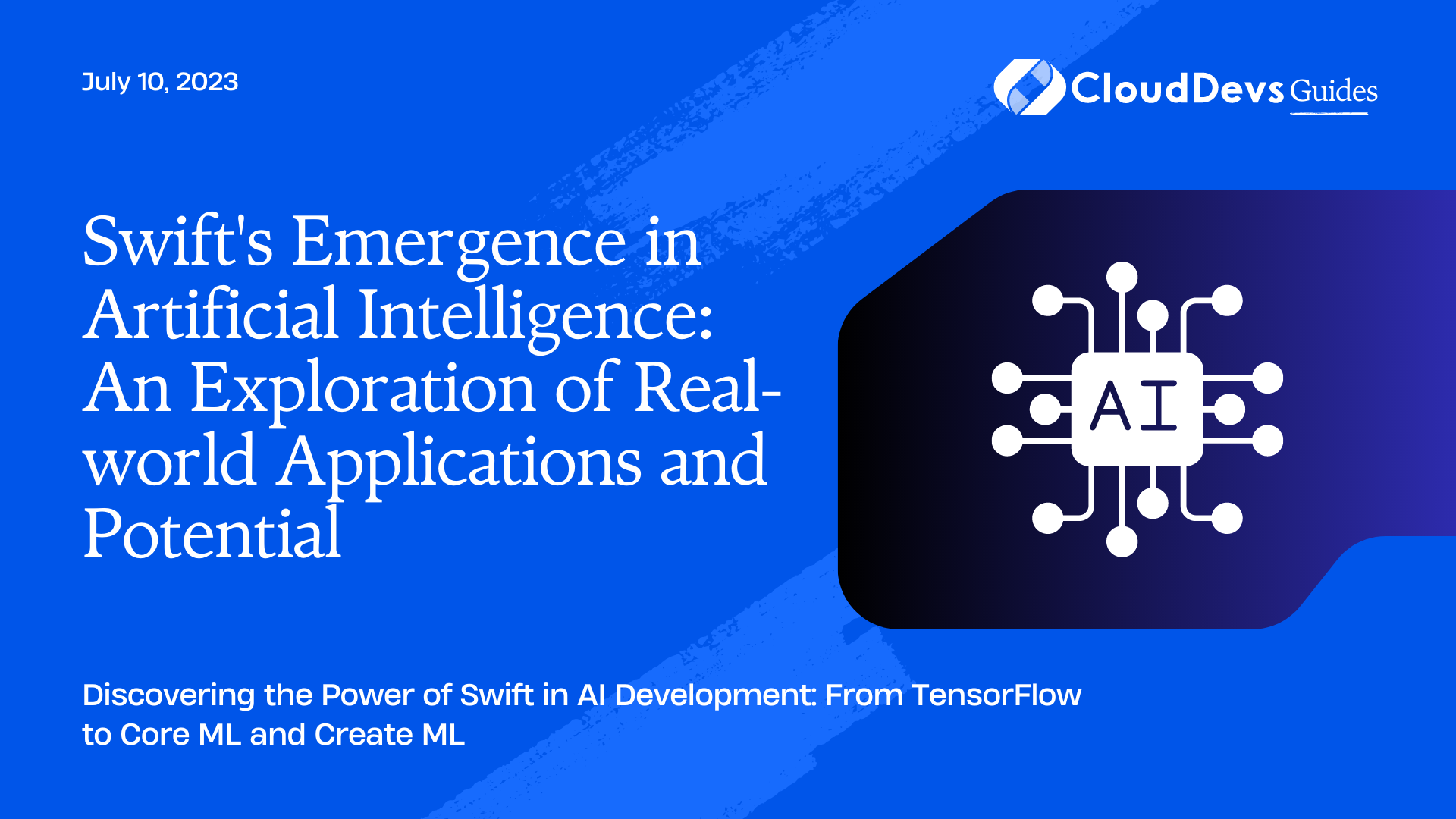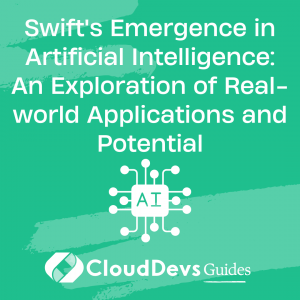Swift’s Emergence in Artificial Intelligence: An Exploration of Real-world Applications and Potential
In the realm of software development, programming languages act as a fundamental interface for turning creative ideas into tangible, dynamic applications. Swift, Apple’s own open-source language, is rapidly gaining traction among developers, and many companies are seeking to hire AI developers proficient in it. Known for its simplicity, performance, and safety features, Swift’s capabilities extend beyond traditional iOS and macOS applications – it is also proving to be a powerful tool in the world of Artificial Intelligence (AI). As more organizations hire AI developers with Swift expertise, we’re seeing an expansion in its AI capabilities and use cases. In this blog post, we will explore how Swift is unleashing new potential in AI, with a deep dive into some real-world applications and use cases.
The Synergy of Swift and AI
When it comes to the development of AI applications, Python has largely been the go-to language. The reason is clear: it offers a simple syntax and a wealth of AI and machine learning libraries like TensorFlow, PyTorch, Keras, and many others. However, as the AI field grows, the need for more robust, efficient, and safer languages is also increasing. This is where Swift comes into the picture.
Swift’s design focuses on speed, safety, and expressiveness. It prevents many common coding errors and offers improved readability with clean syntax. Moreover, Swift’s static typing and error handling allow developers to write safer and more robust code. All these features are incredibly valuable in AI development, where bugs and errors can have significant consequences.
Swift for TensorFlow
In 2018, the TensorFlow team at Google announced Swift for TensorFlow, an exciting development that offered a combination of the flexibility of eager execution with the high performance of graphs and sessions. Swift for TensorFlow was an attempt to create a next-generation platform for machine learning, combining the best of both worlds: Swift’s simplicity and safety features with TensorFlow’s power and functionality.
Example 1: Building a Neural Network with Swift for TensorFlow
Consider a scenario where you are tasked to create a neural network for a simple image recognition task. Here is how you might implement it using Swift for TensorFlow:
```swift
import TensorFlow
// Define a simple sequential model
struct Model: Layer {
var layer1 = Dense<Float>(inputSize: 784, outputSize: 256, activation: relu)
var layer2 = Dense<Float>(inputSize: 256, outputSize: 64, activation: relu)
var layer3 = Dense<Float>(inputSize: 64, outputSize: 10)
@differentiable
func callAsFunction(_ input: Tensor<Float>) -> Tensor<Float> {
return input.sequenced(through: layer1, layer2, layer3)
}
}
```
This simple code block demonstrates how easily you can create a three-layer neural network with Swift for TensorFlow. Moreover, the model’s differentiation is also simple and automatic, which is beneficial when calculating gradients for backpropagation.
Core ML
Core ML is Apple’s machine learning framework for iOS and macOS. It allows developers to integrate machine learning models into their applications. Core ML supports various types of models, including neural networks, decision trees, and support vector machines. Importantly, models run on the device, which protects user data and allows for offline operation.
Example 2: Image Classification with Core ML and Swift
Imagine creating a mobile application that can identify different types of flowers from images. With Core ML and Swift, this becomes a straightforward task.
First, you would need a trained model. You can either train this model yourself using a dataset of flower images or use a pre-trained model. Once the model is ready, you can convert it into Core ML format using Core ML Tools.
Here’s an example of how you could use this model in your Swift application:
```swift
import CoreML
import Vision
// Create a Vision Core ML request
let model = try? VNCoreMLModel(for: FlowerClassifier().model)
let request = VNCoreMLRequest(model: model!) { request, error in
if let results = request.results as? [VNClassificationObservation] {
// Print the name of the top flower classification
print(results.first?.identifier)
}
}
// Create a handler and perform the request
let handler = VNImageRequestHandler(ciImage: image)
try? handler.perform([request])
```
In this example, `FlowerClassifier` is the machine learning model you’ve trained for flower image classification. The Vision framework processes the image and returns an array of classifications. The top classification (i.e., the most probable one) is then printed out.
Creating ML-powered iOS Applications with Create ML
Create ML is another powerful tool from Apple, enabling developers to easily and quickly develop machine learning models right on their Mac, using Swift or Swift playgrounds. It’s simple, yet powerful, as it leverages the power of machine learning without requiring the user to have an extensive background in the field.
Example 3: Text Classification with Create ML and Swift
Suppose you’re developing an iOS application to analyze customer reviews and categorize them as either positive or negative. Create ML makes it easy to train a model for this task.
```swift
import CreateML
import Foundation
// Load the data
let url = URL(fileURLWithPath: "/path/to/data")
let data = try MLDataTable(contentsOf: url)
// Create a text classifier
let textClassifier = try MLTextClassifier(trainingData: .labeled(.init(data["text"], label: data["label"])))
// Evaluate the model's accuracy
let evaluation = textClassifier.evaluation(on: data)
print("Model's accuracy: \(evaluation.accuracy)")
// Save the trained model
try textClassifier.write(to: URL(fileURLWithPath: "/path/to/save/model"))
```
In this example, `data` is a table that contains the training data, with each row representing a review (under the “text” column) and its associated label (under the “label” column). The `MLTextClassifier` is then trained on this data. Finally, the trained model is saved to disk so that it can be integrated into an iOS application.
Conclusion
AI continues to revolutionize many aspects of our lives, and programming languages are not exempt from this influence. Swift, in particular, is blazing a trail in the AI field. This surge in the use of Swift for AI has led to an increased need to hire AI developers proficient in this language. The combination of Swift with powerful libraries and frameworks such as TensorFlow, Core ML, and Create ML is not only improving the quality and performance of AI applications but is also making AI more accessible to developers around the globe. This accessibility, and the broadened potential to hire AI developers with diverse skill sets, has encouraged the development of everything from simple neural networks to sophisticated machine learning models on mobile devices. In the modern landscape of AI, Swift is undoubtedly unleashing new potential.
Table of Contents









